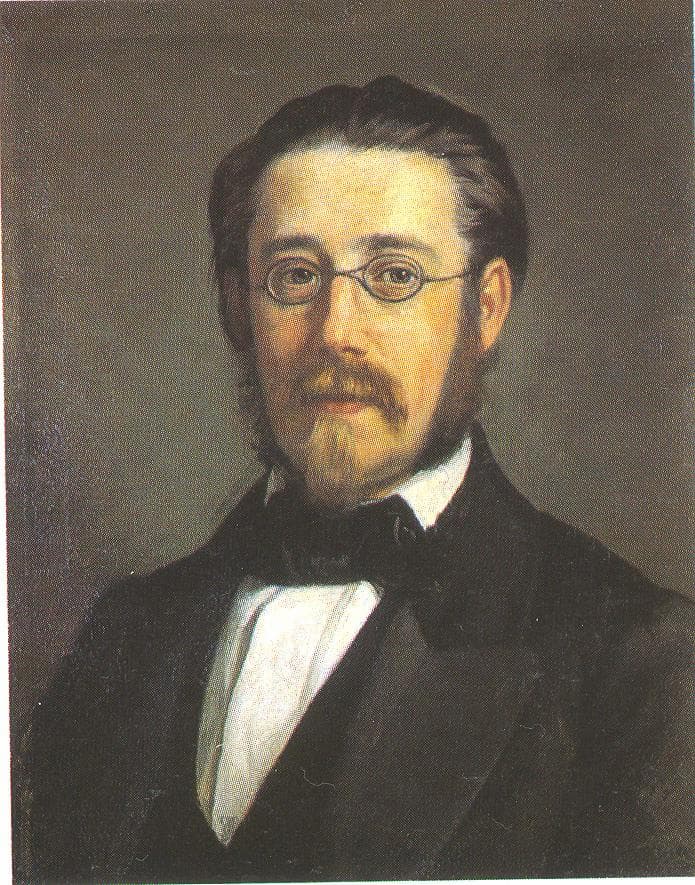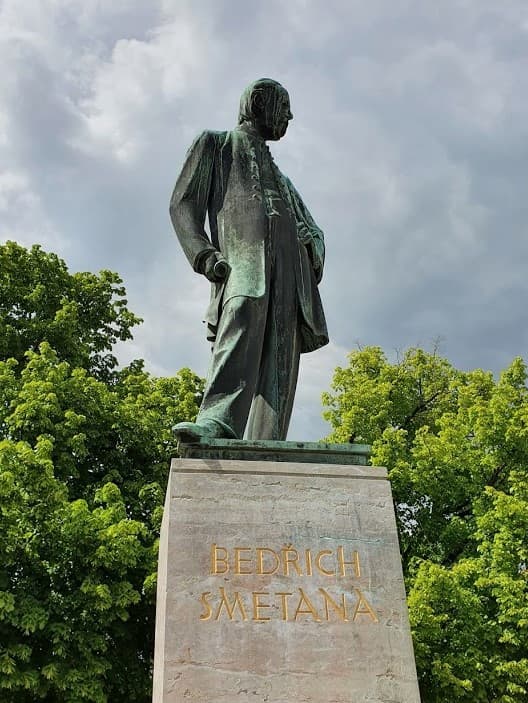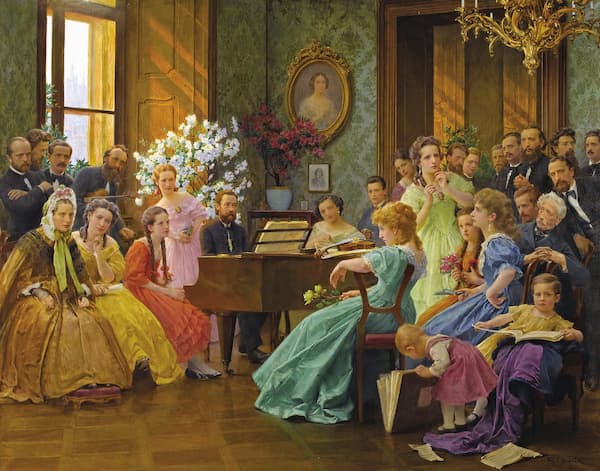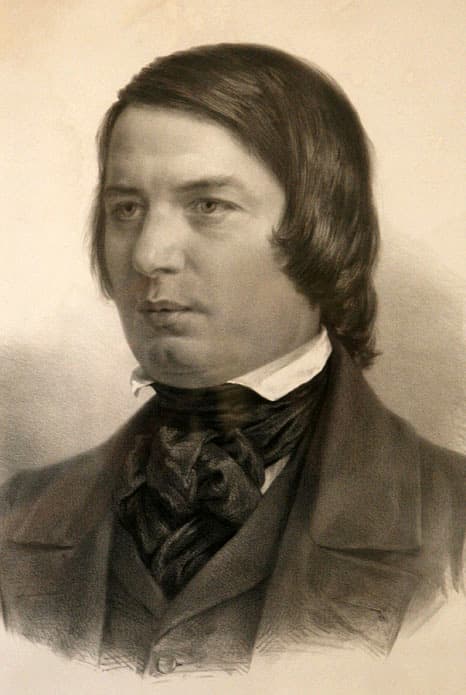Bedřich Smetana is often hailed as the father of Czech music. In his orchestral masterpieces like Má Vlast, he offers a delightful window into his melodic genius and his emotional connection to his homeland.
His compositions for piano are less well known, but they range from virtuosic concert pieces to tender character sketches. His style blends expressions of Romanticism with Czech folk elements, balancing technical flair with heartfelt lyricism.

Bedřich Smetana
Smetana’s Albumblätter are a great entry point into his piano music because they are concise, emotionally rich, and infused with his signature Czech spirit. For listeners they are like bite-sized morsels, perfect for a quick dive into Romantic piano music.
For pianists they are rewarding to play, offering a mix of technical fun and expressive depth without requiring virtuoso chops. So let’s dive straight in.
Bedřich Smetana: Albumblatt for Kateřina Kolářová (Jitka Čechová, piano)
Intimate Thoughts

Kateřina Kolářová
Smetana composed Albumblätter, short piano pieces often described as musical snapshots or sketches, at various points in his career. And while they vary in mood from playful and whimsical to introspective and poignant, some have a specific personal connection.
The Albumblatt for Kateřina Kolářová is a short and intimate work probably composed in the 1840s, during Smetana’s courtship or early marriage to Kateřina Kolářová, his first wife. Kateřina was a talented pianist and a significant influence on his early career.
The composition is a tender and lyrical miniature with a gently flowing melody unfolding over an arpeggiated accompaniment. Evoking intimacy and affection, it feels like a musical love letter, capturing Smetana’s admiration for her as both a person and a musician.
Bedřich Smetana: Albumblatt for Elisabeth F. Thun (Jitka Čechová, piano)
Royal Patronage
In the 1840s, Smetana composed a short and evocative work for Elisabeth Felicia Thun. She was a young noblewoman from the Thun-Hohenstein’s, one of the most prominent families in Czech cultural circles. And Elisabeth Felicia was also one of Smetana’s piano students.
The Albumblatt dates from the 1840s, and Elisabeth’s connection to Smetana reflects his ties to the Prague elite during this time. She would later become a dedicated supporter of Smetana’s work, organising concerts and raising funds.
The Albumblatt is a lively and spirited piece, energetic and with a bright, dance-like character. Its melody and rhythm give a subtle nod to Czech folk music, as the single musical idea is developed with pianistic flair. A perfect miniature for the noble dedicatee.
Bedřich Smetana: Albumblatt for Josephine Finke (Jitka Čechová, piano)
A Possible Student

Statue of Smetana in Litomyšl
Little is known of Josphine Finke, the dedicatee of one of Smetana’s Albumblätter. She was likely a young woman in Prague’s musical or social scene, possibly a student or a family friend. The dedication certainly suggests a personal connection, though not necessarily romantic.
Smetana often wrote short pieces to express gratitude or affection for his students and supporters. And this one is a lyrical and introspective piece, featuring a gentle singing melody over a flowing accompaniment.
The Albumblatt is concise and focuses on a single melodic idea with a clear, song-like structure. By emphasising expressive phrasing and delicate dynamics, Smetana created an intimate and almost conversational feel. This piece is accessible for intermediate pianists, requiring a sensitive touch and careful attention to melody and voicing.
Bedřich Smetana: Albumblatt for Jean Kunz (Jitka Čechová, piano)
Prague Community
The Albumblatt for Jean Kunz dates from 1846, when Smetana was trying to establish himself as a pianist, composer, and teacher in Prague. Probably written for a personal album, it follows the tradition of gifting a short composition as a keepsake.
Once again, little is known about Jean Kunz, but he was likely a member of the Prague musical or cultural community. The piece is lively and spirited, with its bright and upbeat character contrasting with the more lyrical examples.
Based on a single thematic idea with a clear melody and supportive accompaniment, this Albumblatt creates a cheerful and engaging mood. While not overly virtuosic, it does demand precision to convey its bright energy.
Bedřich Smetana: Albumblatt for Vaclav Ulwer (Jitka Čechová, piano)
A Diligent Student
Trying to establish his career during his early 20s, Smetana was working as a pianist, composer, and teacher in Prague. And among his piano students we find Vaclav Ulwer. Little is known about his life, but the relationship was significant enough to warrant a dedicated Albumblatt.
This miniature has a sombre and introspective character, and the melody evokes a sense of solemnity or contemplation. It does retain Smetana’s signature Czech melodic inflexions, but it almost sounds like a tribute or memorial.
The Grave tempo and minor key create a unified, meditative atmosphere, and its sombre tone is unique among Smetana’s early Albumblätter. The piece may reflect a moment of personal significance, but it certainly showcases Smetana’s ability to convey deep emotion in a compact form.
Bedřich Smetana: Albumblatt for Marie Proksch (Jitka Čechová, piano)
A Young Prodigy

František Dvořák: Bedřich Smetana among his friends in 1865
Marie Proksch was a young Czech pianist and composer from a musical family in Prague. Her father, Josef, was a respected piano teacher who ran a music institute where Smetana briefly studied in the 1840s.
Marie was a child prodigy, and at the age of 10, she was already a skilled pianist. Smetana admired Josef’s teaching, and he appreciated Marie’s promising talent. The Albumblatt, dedicated to a young prodigy from a prominent musical family, reflects Smetana’s engagement with Prague’s vibrant musical scene.
This Albumblatt is a perfect musical gift for a talented young pianist, weaving a song-like melody to create a balanced and graceful atmosphere. We can hear some subtle Czech folk inflexions, and its warm and melodic tone aligns with Smetana’s ability to craft concise and expressive works.
Bedřich Smetana: 3 Albums Leaves, Op. 3 “To Robert Schumann” (Roberto Plano, piano)
To Robert Schumann

Portrait of Robert Schumann
Unlike the individual Albumblätter sampled earlier, the album leaves of Op. 3, sometimes designated Sketches, are not exclusively tied to personal dedicatees but published as a set intended for a broader audience.
The entire set progresses from a celebratory opening “To Robert Schumann,” to the introspection in the “Wayfarer’s Song,” and an exuberant conclusion in “It Boils and it Roars.” As we can tell from the titles, these miniatures reflect Smetana’s youthful Romantic style, heavily influenced by Robert Schumann, and balanced with subtle Czech folk elements that foreshadow his later nationalistic works.
The dedication to Schumann is a beautiful tribute to the German Romantic composer, whose character pieces profoundly influenced the young Smetana. The piece sounds a lively and celebratory mood, evoking Schumann’s energetic style balanced by a more introspective section.
Bedřich Smetana: 3 Albums Leaves, Op. 3 “Wayfarer’s Song” (Roberto Plano, piano)
Wayfarer’s Song
The second piece in this set is titled “Wayfarer’s Song,” and it unfolds in a hauntingly introspective mood in the minor key. The minor tonality and slow tempo evoke the solitary journey of a wanderer burdened by longing and loss.
This touching miniature seems to channel Smetana’s personal grief, possibly over the death of his daughter, while drawing on Romantic ideals of the wandering artist.
The melody, lyrical and expressive, sings with a poignant and vocal quality, and it is adorned with delicate ornaments and chromatic inflexions that deepen its emotional weight. Set against a flowing accompaniment of arpeggios or repeated chords, the melody’s legato phrasing demands a sensitive touch, with the subtle rubato reflecting Czech folk laments.
Bedřich Smetana: 3 Albums Leaves, Op. 3 “It Boils and it Roars” (Roberto Plano, piano)
It Boils and It Roars
The final “It Boils and It Roars” sounds a vibrant and exuberant soundscape that evokes a tumultuous scene of bubbling energy. It is not difficult to imagine a Czech folk festival in full swing, as the sprightly and tuneful melody dances with the rhythmic bounce of a dance.
The motivic phrases are infused with Czech folk vitality, and it all surges with a syncopated and dotted rhythm that captures the imagery of the title. Brief modulation adds a sense of swirling motion, and the piece builds to a climactic cadence.
Bedřich Smetana’s Albumblätter are charming short piano pieces that capture his youthful Romantic exuberances, blending lyrical melodies, dance-like rhythms, and subtle folk influences. These “musical postcards” include standalone works dedicated to friends, students, or patrons, and complete collections.
In the event, they are intimate and accessible gems in concise and heartfelt forms. They are like a musical scrapbook where each page tickles your ears with Czech charm. And they are absolutely perfect for the intermediate pianist.
For more of the best in classical music, sign up for our E-Newsletter
Bedřich Smetana: 6 Albumblätter, Op. 2 (Roberto Plano, piano)

